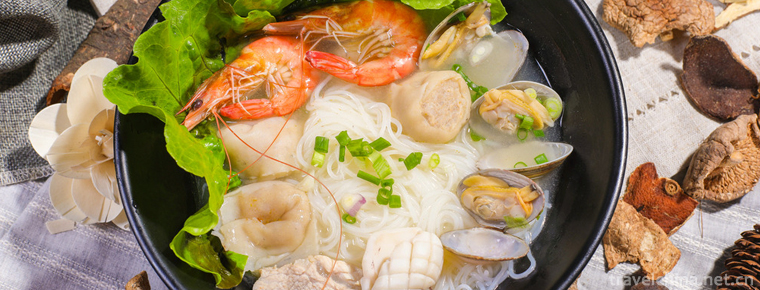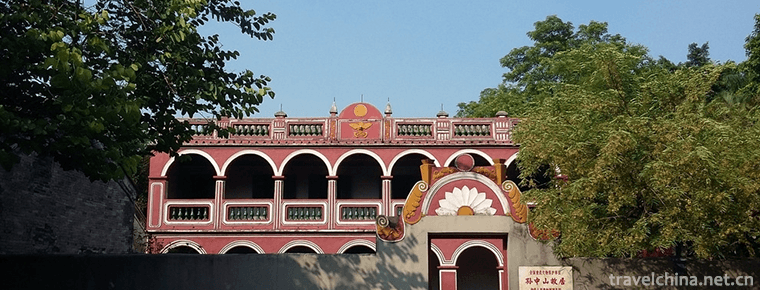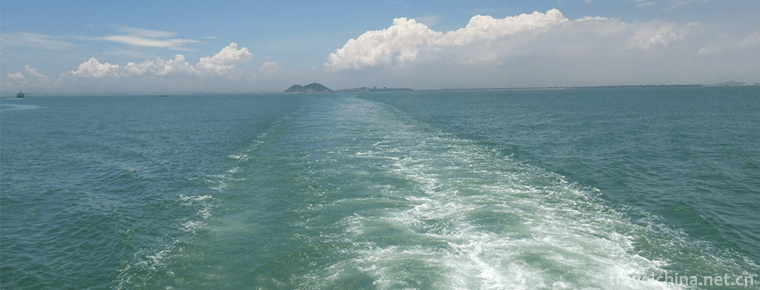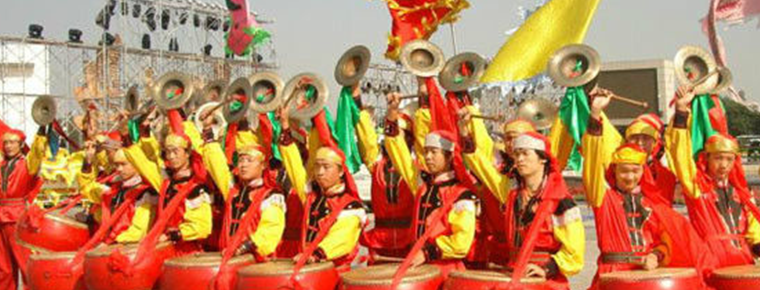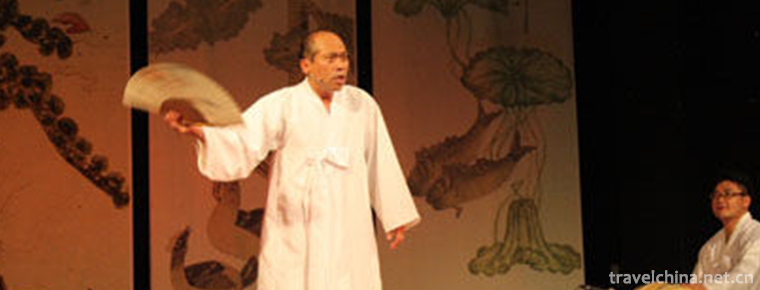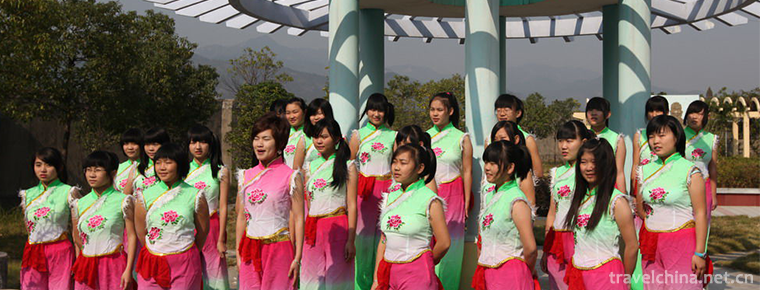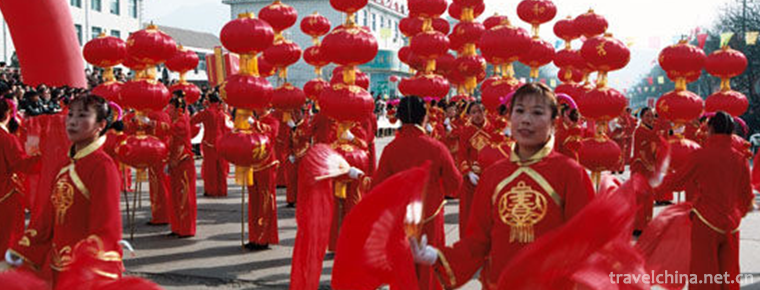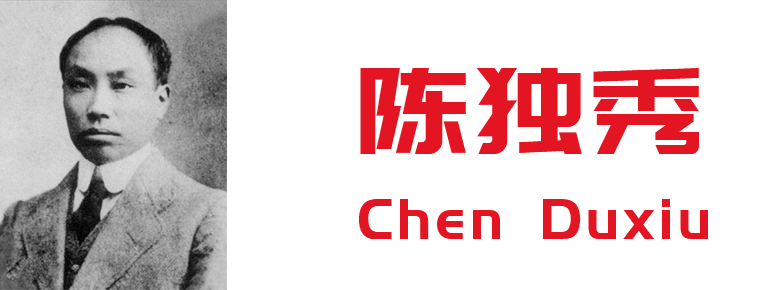Chunxi Road
Chunxi Road is located on Chunxi Road, Jinjiang District, Chengdu. It covers an area of about 20 hectares east of Beixin Street, south of Zongfu Road, west of Hongxing Road, north of Dongjie Street, Nanxin Street, Zhongxin Street and neighboring areas. Chunxi Road is bustling and prosperous, and now there are about 700 commercial outlets, with an area of about 220,000 feet. It is praised as a commercial street with Chinese characteristics by the industry.

Although there was a hundred years of Chun Xi, Chunxi Road was built by warlord Yang Sen in 1924. Initially, Chunxi Road in Chengdu was named Senwei Road because of Yang Sen's title of "General Senwei". Later, it was renamed Chunxi Road to describe the scene of prosperous commerce, people's bustling and prosperous times.

Chunxi Road was supposed to be built into a straight line, but when Zheng Shaofu, then the owner of the Fuji Pharmacy on Capital Street, was an interpreter of the French Consulate, he refused to demolish it, and Yang Sen had to compromise. So in Zhongshan Square, Chunxi East Road and Chunxi West Road, Chunxi South Road and Chunxi North Road are staggered.

Chunxi Road was named in 1924, 87 years ago, known as the golden street of 100 years. Yang Sen, then the governor of Sichuan Province, proposed the construction. Yang Sen ordered the old Yamen to be completely demolished. A street from south to North was built here, and then two streets from east to West were built, called the eastern, western, southern and Northern sections of Chunxi Road. According to the relevant historical data, Chunxi Road's predecessors began in the merchants, was fated in the government, completed in the warlords period.

More than a hundred years ago, this was the Yamen of the Qing Dynasty, Yamen sitting north and south, covering an extremely wide area, there is a long and deep lane in front of the door, right and Nanxin Street adjacent, left and Chengshou Street, Kejia Lane border, opposite the street. After the Republic of China, the Yamen was abandoned and many shanty houses and small shops were settled in this deep alley in front of the street. A middle school was built in the old Yamen. In a flash, the old officialdom became a market, with the Hawking of vendors, the flag of the shop, the bargaining of trade, the noise of people, and the formation of small commodity markets.

In the spring of 1924, when Yang Sen, the warlord of the governor of Sichuan, took charge of Chengdu, he began to demolish the houses around the Yamen of the former inspectors. He imitated Western Europe, improved the municipal administration and built roads. If so, a new road was built on four sections, east, west, South and north. Garden.

After the new road was built, Yang Sen asked a former Qing Dynasty Jiang Ziyu of Shuangliu County to name it. Jiang Ziyu knew that Yang Sen was so happy that he named this new road "Shen Wei Road". The street name seemed a bit foreign-sounding, in fact, implied meaning, intended to win the field, when the Northern Government awarded Yang Sen the title of "Senwei" General.

Yang Sen was expelled from Chengdu in the war of "unification of Sichuan" and "Senwei Road" was changed to "Chunxi Road". Why did it change its name? Why the name of Chunxi Road? The name change is, of course, the traces of Yang Sen. But there are several claims in Chunxi Road. After Yang Senbing's defeat, Jiang Ziyu suggested to the relevant politicians that the "Senwei Road" should be replaced by "Chunxi Road". Chen Yuewei, a famous calligrapher and poet who once served as secretary of Chengdu City Mayor Wang Qixu, named this street for its "warm spring breeze and people's sons coming from Xi Xi" and its name is "Chunxi Road".

A monument with a bronze statue of Dr. Sun Yat-sen on it was erected in early 1928 at the heart of Chunxi Road Street Garden. When she was Mayor of Chengdu in 1943, she thought the bronze statue was somewhat distorted. She invited famous sculptor Liu Kaiqu to reconstruct a statue of Sun Yat-sen sitting in the garden today, which is the masterpiece of Liu Kaiqu.

After the Cultural Revolution, Chunxi Road was changed to "Anti-imperialist Road" on August 24, 1966. Because of its special status in Chengdu, it became the main place for the Red Guard activities in Chengdu, and finally returned to "Chunxi Road".

More pic





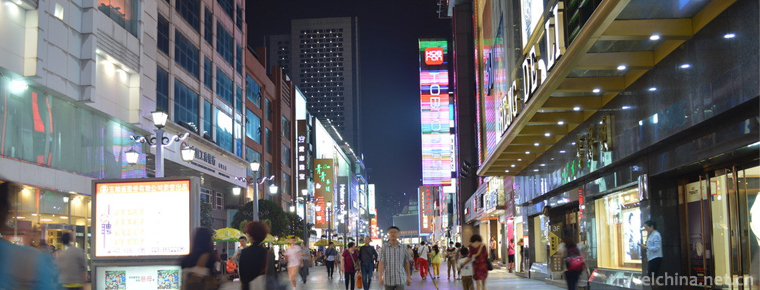
-
Sun Zhongshans hometown
Sun Yat-sen's hometown is located in Cuiheng Village, Zhongshan City, Guangdong Province. It is surrounded by mountains on three sides: south, north and west, East by the Pearl River Estuary.
Views: 157 Time 2018-12-12 -
South Australia Island Tourist Area
Nanao Island is the only island county in Guangdong Province. It is composed of 37 small islands with a land area of 130.90 square kilometers (including 128.35 square kilometers of the main island) an.
Views: 149 Time 2019-02-07 -
Han music in Guangdong
Guangdong Han music is an ancient music of the Central Plains brought about by Hakka ancestors when they moved southward more than 1,000 years ago..
Views: 153 Time 2019-05-01 -
Gong and Drum Art
Gong and drum art can be roughly divided into Yunsheng Gong and drum, Zhongzhou big drum, Ezhou brand gong, Xiaohe Gong and drum, Hanggu flying gong, Changshan battle drum, Taiyuan Gong and drum, Liji.
Views: 368 Time 2019-05-15 -
Miao folk songs
According to its content, Miao folk songs can be divided into Youfang song (love song), wine song, bitter song, anti-song, funeral song, labor song, political song, children's song, riddle song and so.
Views: 88 Time 2019-06-05 -
Pansori
The main art of Korean folk art is Pan Suo Li, which appeared in the 18th century. At the beginning of the 20th century, it was introduced into China with the immigration of Korean nationality. The wo.
Views: 178 Time 2019-06-08 -
Tongcheng Song
Tongcheng Song is a kind of local folk song originating from Tongcheng, Anhui Province. It is a kind of local folk literature in the form of rhyme created by the local working people collectively. At .
Views: 187 Time 2019-06-21 -
Zuoquan Xiaohua Opera
Zuoquan Xiaohua Opera is a kind of Han folk song and dance drama which originated in Zuoquan County of Shanxi Province and spread in Yushe and Heshun areas near Zuoquan County. Its style is: one step .
Views: 238 Time 2019-08-16 -
Chen Duxiu May Fourth leader
Chen Duxiu (October 9, 1879 -1942 May 27th), formerly known as "Qing Tong", the official name is "Sheng Sheng", "Zhong Fu", "Shi Shi". Anhui Huaining (now Anqin.
Views: 130 Time 2019-09-07 -
Dagu Glacier
Dagu iceberg scenic area is located in Heishui County, Aba Tibetan and Qiang Autonomous Prefecture, Sichuan Province, China, 102.44.15-102.52.46 E and 32.12.30-32.17.06 n, which is a rare modern mountain glacier. .
Views: 348 Time 2020-11-07 -
Dazhou economy
In 2019, Dazhou's GDP will reach a new level, reaching 204.15 billion yuan, with a year-on-year growth of 7.7% based on comparable prices. Among them, the added value of the primary industry was 34.48 billion yuan, an increase of 2.9%; the add.
Views: 155 Time 2020-12-20
